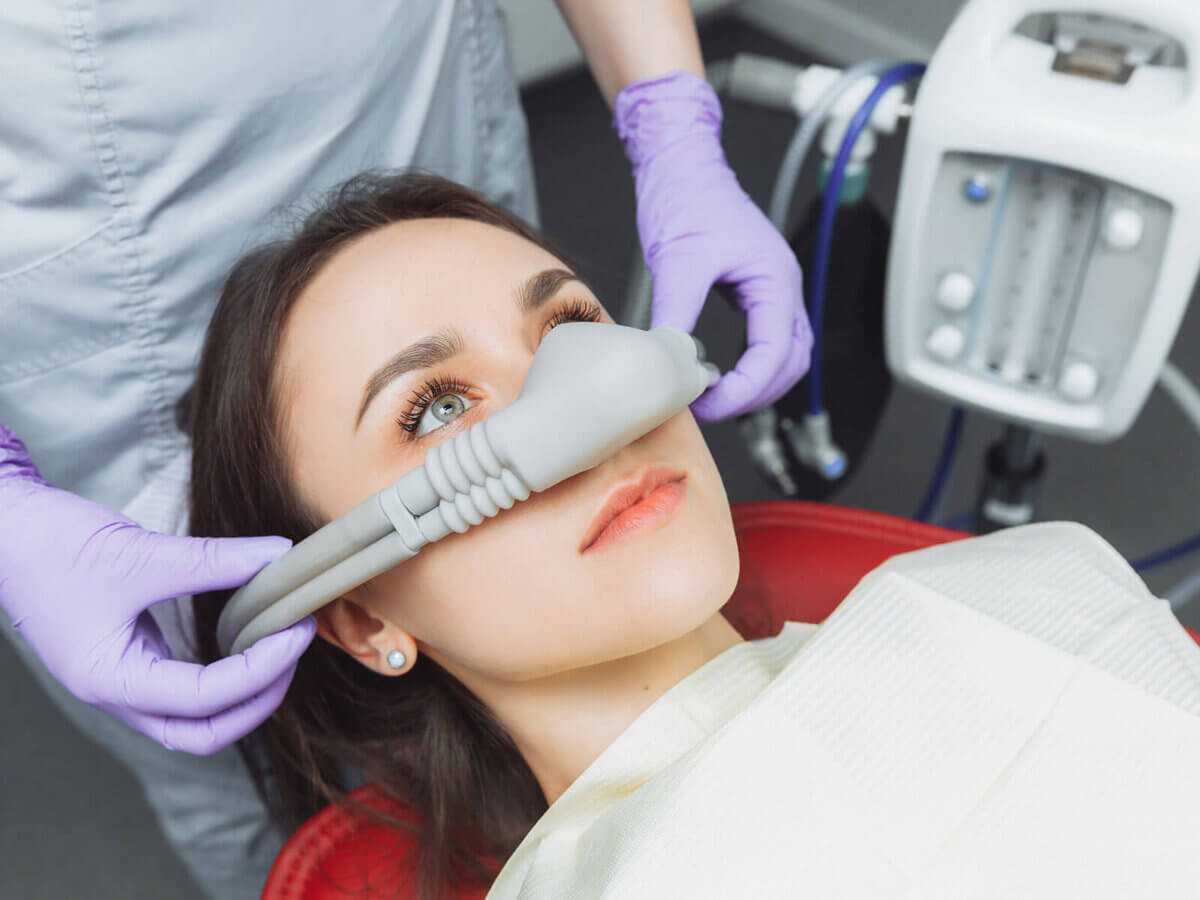Blog
Dental hygiene tips for healthy teeth & gums

How Sedation Dentistry Can Help Nervous Patients?
Dental anxiety is a frequent issue that can prevent people from receiving vital dental care, thus jeopardizing their oral health. Sedation dentistry emerges as a beneficial alternative, providing a variety of choices to assist worried patients in feeling more comfortable and relaxed during dental treatments. In this article, we will look at the benefits of sedation dentistry, the different procedures available, and how it can make dental appointments more pleasant for individuals with dental phobias or anxiety.
Understanding Dental Fear:
Dental Anxiety Causes:
Previous Traumatic Encounters: Previous negative dental encounters can add to anxiety.
Fear of Pain: Fear of experiencing pain or discomfort during dental operations.
Loss of Control: During the appointment, you may feel vulnerable or out of control.
Consequences of Skipping Dental Checkups:
Oral Health Compromise: Avoiding dentist checkups might result in untreated dental disorders and compromised oral health.
Anxiety Escalation: Delaying treatment may cause anxiety to rise, establishing a dread loop.
Advantages of Sedation Dentistry:
Anxiety Reduction:
Relaxing Effect: Sedation has a soothing effect, which relieves anxiety and promotes relaxation.
Increased Comfort: Nervous patients can receive therapy with greater ease and comfort.
Pain Management Has Improved:
Enhancement of Local Anaesthesia: Sedation can improve the effectiveness of local anesthesia, reducing discomfort during procedures.
Pain Perception Reduction: Patients’ perceptions of pain may be reduced, contributing to a more pleasurable experience.
Helps with Complex Procedures:
Sedation allows for longer treatment sessions, allowing dentists to execute more complex operations in one visit.
Reduced Discomfort During Long Procedures: Patients can comfortably undertake lengthy procedures without experiencing chronic discomfort.
Cooperation and compliance are encouraged:
Sedation promotes patient compliance, making it easier for dentists to execute necessary treatments.
Increased Compliance: Sedation makes nervous patients more likely to follow prescribed treatment methods.
Sedation Dentistry Comes in a Variety of Forms:
- Nitrous Oxide (also known as Laughing Gas): Nitrous oxide, when inhaled through a mask, causes relaxation and exhilaration. Its effects are immediately reversible, allowing patients to resume regular activities following the operation.
- Oral Sedation: Prescription Medication: Patients are given an oral sedative before their session.
- Conscious Sedation: Patients are awake but deeply relaxed, with little or no recall of the operation.
- Intravenous (IV) Sedation: Administered Via Vein: Sedatives are administered directly into the bloodstream via an IV.
- Sedation Levels Can Be altered: Sedation levels can be changed, ranging from moderate relaxation to deep sedation.
- Anaesthesia General: Patients are entirely unconscious and oblivious during the process.
- Extensive Procedures: Generally reserved for complex or extensive procedures.
The Sedation Dentistry Method:
Pre-Assessment:
Dentists evaluate patients’ medical histories, anxiety levels, and treatment needs.
Options Discussion: Dentists review various sedative options and select the best technique.
Consent with Knowledge:
Patients are given thorough information about their chosen sedation method, including potential dangers and benefits.
Question Time: Patients are invited to ask questions and share their concerns.
Administration and supervision:
Expert Administration: During the process, qualified specialists administer and monitor sedation.
Monitoring Vital Signs: Continuous monitoring of vital signs supports patient safety.
Recovery and post-operative care:
Observation Period: Patients are watched after the surgery until the sedative effects wear off.
Post-Procedure Instructions: Dentists provide post-sedation care and recuperation advice.
Conclusion:
Sedation dentistry is a humane and effective treatment for people suffering from dental anxiety. Dentists can provide a more enjoyable and comfortable experience by providing various sedative solutions according to the patient’s needs. Patients who previously avoided dental care due to fear can now receive necessary treatments, resulting in improved oral health and a renewed confidence in obtaining dental care. As the area of sedation dentistry evolves, it opens up new avenues for people to overcome fear and embrace a healthier, more relaxed approach to their dental health.


